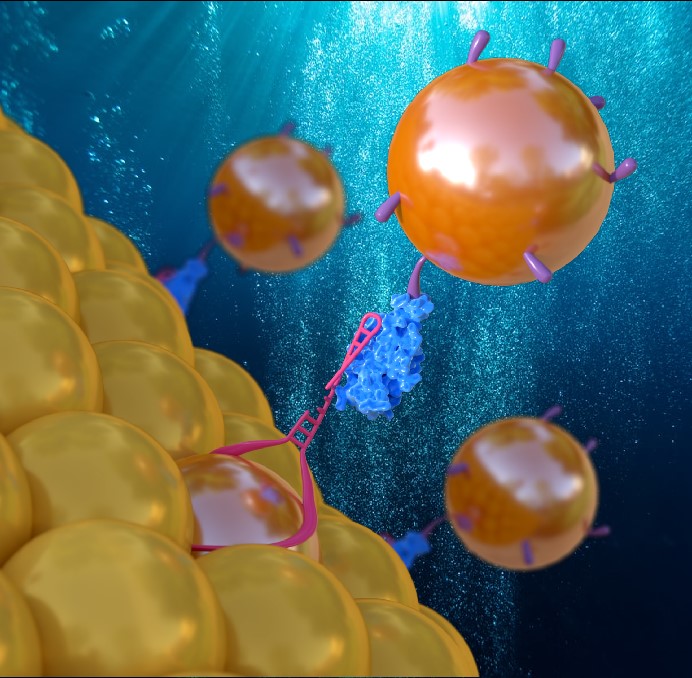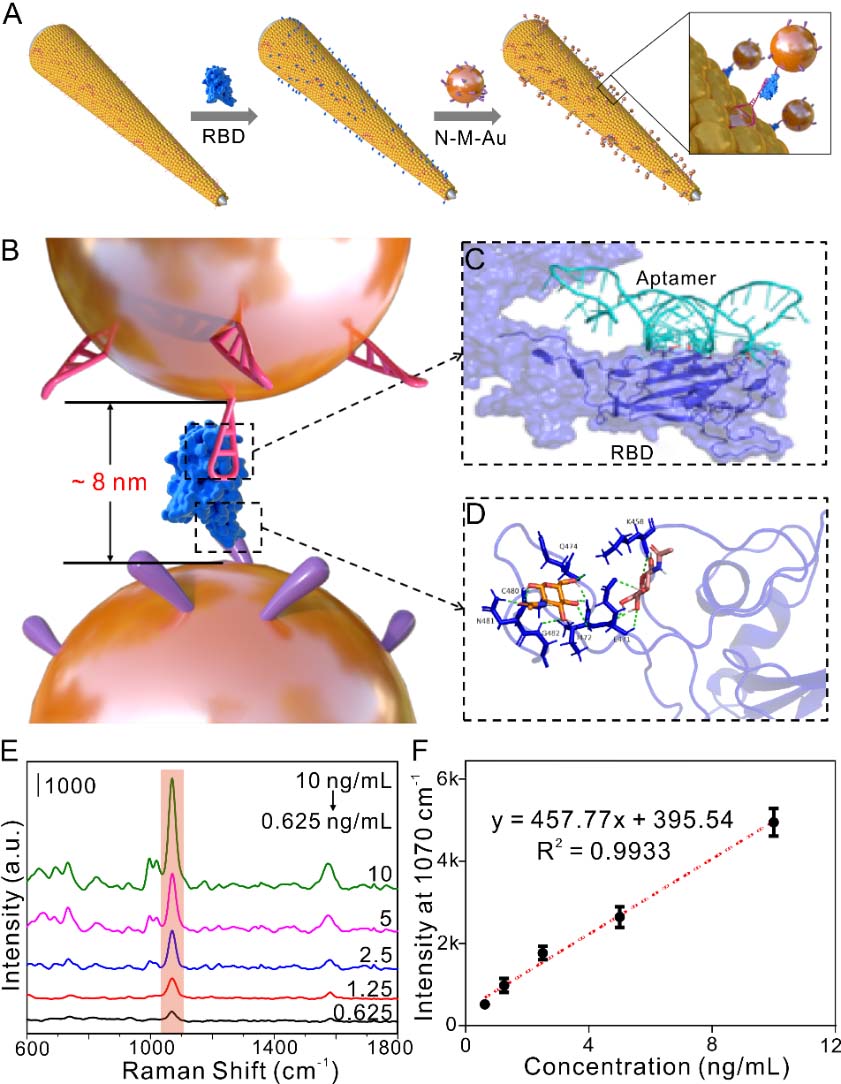
Constructing hot spots using their own properties can achieve sensitive and specific detection effects, but interrogating the optimal Surface Enhanced Raman Spectroscopy (SERS) hot spots is a great challenge for SERS detection of proteins.
Recently, Researchers at Hefei Institutes of Physical Science (HFIPS), Chinese Academy of Sciences, led by Prof. YANG Liangbao and Prof. WANG Hongzhi, along with Prof. WANG Junfeng from High Magnetic Field Lab in HFIPS, developed a novel method to detect COVID-19 related protein by quickly find receptor binding domain (RBD) on COVID-19 virus.
This study, which was published on Analytical Chemistry, designed a hot spot based on the S protein RBD of COVID-19, and completed high sensitivity and specificity with Surface Enhanced Raman Spectroscopy (SERS).
In this research, after combining aptamers, small molecules and COVID-19 RBD, researchers obtained a sensitive SERS signal response. A fishing mode was hence constructed.
With this mode, researchers first attached gold nanoparticles (Au NPs) to a silver needle, on which specific aptamers were modified. RBD to be tested in samples were adsorbed out by using the binding effect of aptamers to RBDS. The RBD could in turn be coupled with another small molecule, prompting the formation of a hot spot with an 8 nm gap between Au NPs linked on the small molecule and the aptamer modified Au NPs on the silver needle, thus achieving a highly sensitive and specific fishing mode SERS detection modality for RBD.
This method has two advantages. One is the low detection limit of RBD and another is the quick SERS signal response (within 15 min). In multiple protein mixture solutions, the detection limit is 0.625 ng / ml, and in the complex environment of urine and blood, the concentration of RBD reaches 1.25 ng / ml, which is also a surprising data.
This provides a research basis for the practical application of SERS in protein detection work.
This study was supported by National Natural Science Foundation of China, Anhui Natural Science Research Project, and Anhui provincial key R & D Program.

Fig. 1 Schematic illustration of the assembly results of fishing mode apparatus.(Image by HUANG Guangyao)

Fig. 2 principle and detection results of RBD by fishing mode device.(Image by HUANG Guangyao)